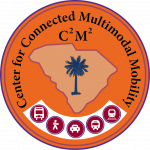| The transportation sector is a major energy consumer and contributor to air pollution. Public transportation authorities can often find it challenging to choose the best projects among a spectrum of candidate transportation projects to reduce energy consumption and mitigate emissions. The objective of this project was to develop a sketch environmental planning framework to integrate traffic simulation and regulatory transportation air quality modeling (i.e., MOVES) to provide robust statistical correlations of the energy and air quality impacts with changes in traffic activities for transit operations and planning. Firstly, a traffic simulation was conducted on the road network of the city of Columbia, South Carolina. The simulations were validated with real-world traffic data acquired from iPeMS in South Carolina to demonstrate the representativeness of the traffic simulation results. iPeMS is the real-time data analysis, visualization, and reporting platform for South Carolina statewide traffic information. Secondly, outputs of traffic simulation, i.e. link-level vehicle trajectory data are processed to prepare inputs for energy/emissions simulation using EPA’s Motor Vehicle Emissions Simulator. The processed inputs include vehicle mile traveled, operating mode distribution, etc. The results of emissions simulation are link-level energy/NOx emission rates on each link for transit bus driving of the whole transportation road network. Then, we utilized machine learning models to develop a statistical correlation between the aggregated traffic activity patterns and MOVES-calculated emissions. The test set predictions showed that our models can accurately estimate MOVES-based energy and emissions rates (within a 10% mean absolute percentage error, MAPE) given aggregated traffic activity data. We also improved prediction accuracy using our neural network model, then the regular regression model. We tested the spatial transferability of our developed models to predict MOVES energy/emissions results using the road network activities of a medium-sized city. Our neural network models can achieve a 15% mean absolute percentage error relative to MOVES results. This demonstrates the transferability of the model results. With traffic data of a whole network, we are able to generate a heat map to show the energy consumption rate of operating transit buses on any link of the road network. |
Data-driven Multimodal Transportation Energy Consumption Prediction and Analysis Framework for Sustainable Transit and Transportation Planning Final Report
Data-driven-Multimodal-Transportation-Energy-Consumption-Prediction-and-Analysis-Framework-Final-Report
